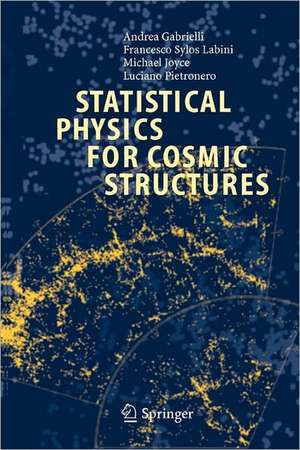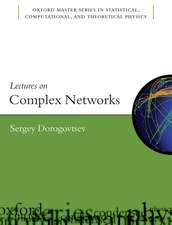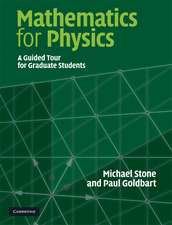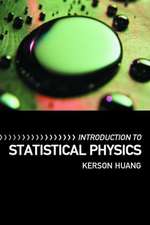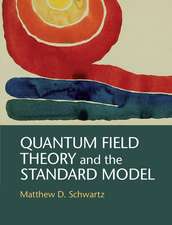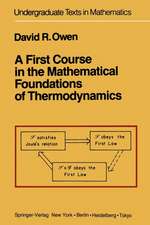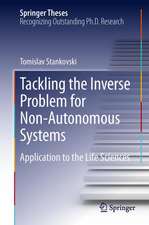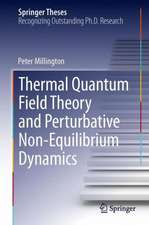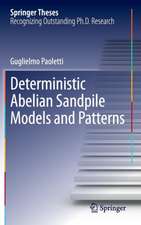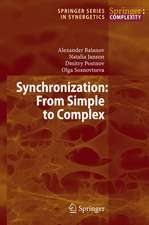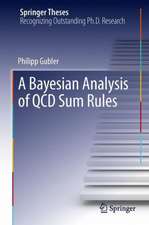Statistical Physics for Cosmic Structures
Autor Andrea Gabrielli, F. Sylos Labini, Michael Joyce, Luciano Pietroneroen Limba Engleză Paperback – 14 oct 2010
| Toate formatele și edițiile | Preț | Express |
|---|---|---|
| Paperback (1) | 951.29 lei 43-57 zile | |
| Springer Berlin, Heidelberg – 14 oct 2010 | 951.29 lei 43-57 zile | |
| Hardback (1) | 955.88 lei 43-57 zile | |
| Springer Berlin, Heidelberg – 24 noi 2004 | 955.88 lei 43-57 zile |
Preț: 951.29 lei
Preț vechi: 1160.10 lei
-18% Nou
Puncte Express: 1427
Preț estimativ în valută:
182.02€ • 190.56$ • 150.62£
182.02€ • 190.56$ • 150.62£
Carte tipărită la comandă
Livrare economică 07-21 aprilie
Preluare comenzi: 021 569.72.76
Specificații
ISBN-13: 9783642073922
ISBN-10: 3642073921
Pagini: 440
Ilustrații: XVI, 424 p. 119 illus.
Dimensiuni: 155 x 235 x 23 mm
Greutate: 0.61 kg
Ediția:Softcover reprint of hardcover 1st ed. 2005
Editura: Springer Berlin, Heidelberg
Colecția Springer
Locul publicării:Berlin, Heidelberg, Germany
ISBN-10: 3642073921
Pagini: 440
Ilustrații: XVI, 424 p. 119 illus.
Dimensiuni: 155 x 235 x 23 mm
Greutate: 0.61 kg
Ediția:Softcover reprint of hardcover 1st ed. 2005
Editura: Springer Berlin, Heidelberg
Colecția Springer
Locul publicării:Berlin, Heidelberg, Germany
Public țintă
ResearchCuprins
Statistical Methods.- Uniform and Correlated Mass Density Fields.- The Power Spectrum and the Classification of Stationary Stochastic Fields.- Fractals.- Multifractals and Mass Distributions.- Applications to Cosmology.- Fluctuations in Standard Cosmological Models: A Real Space View.- Discrete Representation of Fluctuations in Cosmological Models.- Galaxy Surveys: An Introduction to Their Analysis.- Characterizing the Observed Distribution of Visible Matter I: The Conditional Average Density in Galaxy Catalogs.- Characterizing the Observed Distribution of Visible Matter II: Number Counts and Their Fluctuations.- Luminosity in Galaxy Correlations.- The Distribution of Galaxy Clusters.- Biasing a Gaussian Random Field and the Problem of Galaxy Correlations.- The Gravitational Field in Stochastic Particle Distributions.
Recenzii
From the reviews:
"Any book on an interdisciplinary subject must build up a self-consistent theory able to explain a great number of observations. The concepts introduced must be pertinent for the phenomena in question and sufficiently elaborated in order to extract solid conclusions in an clear and concise way. These requirements have been perfectly fulfilled in the material presented in this book. … the book is highly recommendable due to the insight it gives into the field of cosmic structures, providing sound basis for further research." (J. M. Rubi, Journal of Statistical Physics, 2006)
"Any book on an interdisciplinary subject must build up a self-consistent theory able to explain a great number of observations. The concepts introduced must be pertinent for the phenomena in question and sufficiently elaborated in order to extract solid conclusions in an clear and concise way. These requirements have been perfectly fulfilled in the material presented in this book. … the book is highly recommendable due to the insight it gives into the field of cosmic structures, providing sound basis for further research." (J. M. Rubi, Journal of Statistical Physics, 2006)
Textul de pe ultima copertă
The physics of scale-invariant and complex systems is a novel interdisciplinary field. Its ideas allow us to look at natural phenomena in a radically new and original way, eventually leading to unifying concepts independent of the detailed structure of the systems. The objective is the study of complex, scale-invariant, and more general stochastic structures that appear both in space and time in a vast variety of natural phenomena, which exhibit new types of collective behaviors, and the fostering of their understanding. This book has been conceived as a methodological monograph in which the main methods of modern statistical physics for cosmological structures and density fields (galaxies, Cosmic Microwave Background Radiation, etc.) are presented in detail. The main purpose is to present clearly, to a workable level, these methods, with a certain mathematical accuracy, providing also some paradigmatic examples of applications. This should result in a new and more general frameworkfor the statistical analysis of the many new data concerning the different cosmic structures which characterize the large scale Universe and for their theoretical interpretation and modeling.
Caracteristici
First monograph on a still controversial subject in cosmology and astrophysics Includes supplementary material: sn.pub/extras
